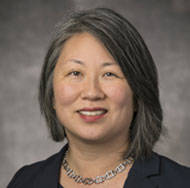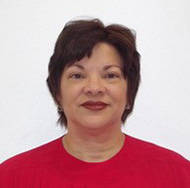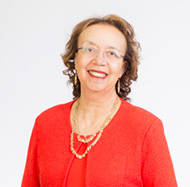Leah Sieck, MD, MS, inaugural co-chair of the ad hoc committee on diversity and inclusion for the Ohio State Radiological Society; and Gail Morgan, MD, FACR, chair of the ACR Commission for Women and Diversity’s Committee for Diversity and Inclusion, contributed this post.
The authors would like to acknowledge colleagues Allan Chiunda, MD, PhD, MPH; Lori Deitte, MD, FACR; Andrea Birch, MD, FACR; and Lucy Spalluto, MD, for co-authoring this material, which is excerpted from a forthcoming in-depth piece in the ACR Bulletin.
Fostering diversity and inclusion in the radiological sciences is a priority for the American College of Radiology® (ACR®). The Commission for Women and Diversity was established in 2012 to empower members to cultivate a profession that celebrates diversity and actively promotes inclusion at all levels of training, practice and leadership.
State chapters function as extensions of the ACR by impacting radiology communities and encouraging advocacy at the grass roots level. Creating a state chapter committee on diversity and inclusion provides a critical opportunity for members to locally embrace and actualize the ACR mission of “excellence in diversity through enhanced member engagement, problem-solving and innovation and mentorship.” Promoting diversity and inclusion ultimately positions our profession to meet the needs of an evolving and increasingly diverse patient population.
Encouraging a diverse array of medical students to choose the radiological sciences is vital not only to the future of our profession, but also to addressing inequities in our healthcare system and society in general, as recent tragedies in our country have highlighted. However, there are several barriers to overcome. The first is limited entry into the medical school pipeline, which reduces the downstream pool of underrepresented minorities (URMs) as future physicians. The second is a disparity of URM and female representation in radiology and radiation oncology as compared to other medical specialties, a “specialty disparity.” The limited pipeline markedly reduces our ability to recruit diversity into our workforce and ACR leadership.
Diversity committees can address these challenges through expanded outreach opportunities to high school, college and early medical school students at a statewide level. This approach dovetails with the activities of the ACR Pipeline Initiative for Enrichment of Radiology program (PIER program), which prioritizes early exposure to the radiological sciences and provides a sponsored summer research internship for first-year URM medical students. Undeterred by the pandemic, the 2020 PIER program is launching next week, June 8, 2020, for 11 selected students who will be mentored virtually by ACR physician volunteers.
The creation of and involvement in state diversity committees can identify, encourage, mentor and support young URM and female radiologists to take on leadership roles in their state chapter, creating a pathway to contributions and leadership in the ACR nationally. As a seminal example of how involvement in state chapters can be a catalyst for ACR leadership at the state and national levels, Dr. Gail Morgan, a female African American radiologist, served as the inaugural chair of the first State Chapter Committee on “Women and General Diversity,” established by the Washington State Radiological Society (WSRS) in 2015. She had made leadership contributions at the state and national level including as a former president of the WSRS and currently serves as the chair for the ACR Committee on Diversity and Inclusion. As an example of “paying it forward,” with Dr. Morgan’s support and mentorship, Dr. Rachel Gerson got involved at the state level as a member of the diversity committee, subsequently becoming its committee chair, and has been recently elected to the ACR Council Steering Committee.
Chapter committee participation increases the number of statewide professional relationships by connecting like-minded professionals actively diversifying the workforce in their local practices or training programs. By creating such a network, successful ideas for diversity initiatives are easily shared among colleagues and no one has to “reinvent the wheel.” Diversity committees will amplify the proposed culture change and create a pipeline for women and URM physicians to enter our profession and ascend into leadership roles. We hope to inspire you to take the next step to trailblaze a path to diversity in your state.
- Does your state chapter include a committee on diversity and inclusion? If so, what are some of your most recent activities? Please share your thoughts in the comments section below, and join the discussion on Engage (login required).



